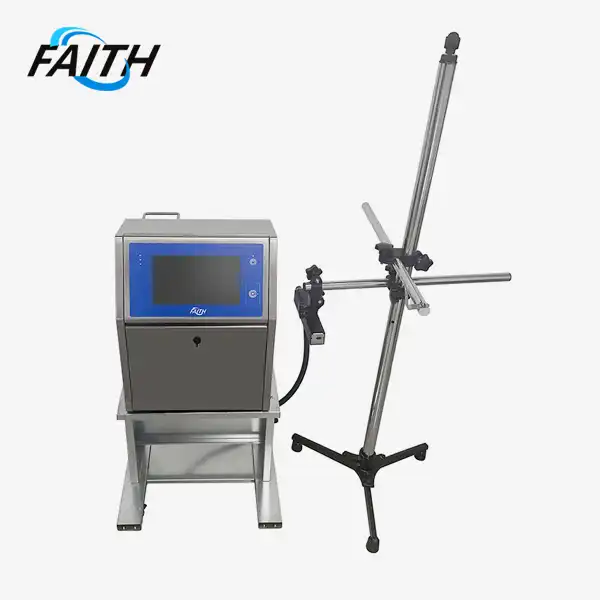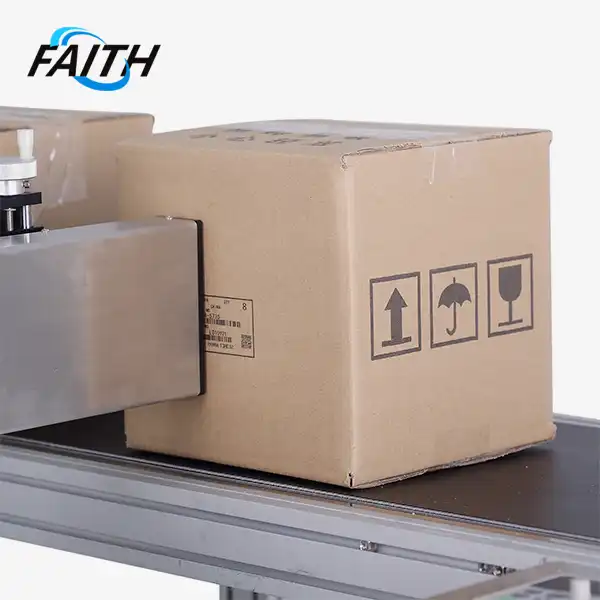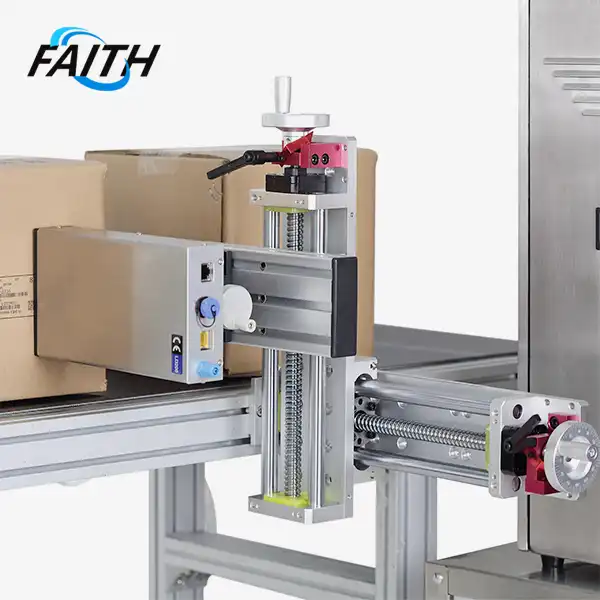Can you print on cardstock with an inkjet printer?
Printing on cardstock with an inkjet printer is a common question for many industries, from packaging to personal crafting. While it's possible to use standard inkjet printers for cardstock, industrial applications often require more specialized equipment like small character inkjet coders. This article explores the nuances of printing on cardstock, the capabilities of inkjet technology, and how industrial-grade solutions can elevate your printing process.
The Basics of Cardstock Printing with Inkjet Technology
Cardstock is valued for its thickness and durability but can present challenges when printing. While standard inkjet printers can handle lighter cardstock, they may struggle with heavier types. To ensure optimal results, it's important to know your printer’s paper weight capacity and adjust settings, such as paper type and feed options, accordingly. This will help maintain print quality and prevent feeding issues, allowing you to print successfully on thicker cardstock without compromising performance.
In industrial settings where speed and precision are crucial, small character inkjet coders provide an ideal solution. These coders are engineered to print on a variety of surfaces, including cardstock, at high speeds without sacrificing print quality. Unlike conventional inkjet printers, small character inkjet coders use specialized inks that bond effectively with cardstock and dry rapidly. This quick-drying capability prevents smudging, making them perfect for fast-paced production lines where efficiency and clean, clear prints are essential. These devices ensure reliable performance across diverse applications.
Small character inkjet coders are highly versatile, making them perfect for industries that need variable data printing on cardstock packaging. Whether printing batch numbers, barcodes, or QR codes, these devices manage complex tasks effortlessly. Their ability to print on curved surfaces sets them apart from flatbed printers, providing an advantage when working with shaped cardstock products. This adaptability ensures consistent, high-quality prints across a wide range of packaging types, enhancing efficiency and flexibility in production lines.
Optimizing Print Quality on Cardstock
Achieving high-quality prints on cardstock involves more than just having the right equipment; it requires a careful balance of ink type, print settings, and cardstock properties. Small character inkjet coders excel in this area by offering a variety of ink formulations tailored for different cardstock types and environmental conditions. These coders ensure optimal ink adhesion, vibrant prints, and consistency across diverse applications, making them an ideal choice for printing on cardstock with precision and reliability.
One key advantage of small character inkjet coders for cardstock printing is their ability to produce sharp, clear text and images, even on textured surfaces. This is especially important in industries such as cosmetics and personal care, where the visual appeal of packaging is just as essential as the printed information. These coders ensure high-quality, precise prints that maintain clarity and readability, enhancing both the aesthetic and functional aspects of product packaging.
The continuous inkjet technology used in many small character inkjet coders ensures consistent print quality even at high speeds. By precisely controlling tiny ink droplets, these devices can create sharp, durable codes that withstand the rigors of production, shipping, and shelf life. This level of control is especially valuable when printing on cardstock, as it allows for fine adjustments to accommodate the material's absorbency and surface characteristics.
Industrial Applications and Considerations
In industrial settings, the choice of printing technology can significantly impact productivity and compliance. Small character inkjet coders offer several advantages over traditional inkjet printers when it comes to cardstock printing in manufacturing environments:
- Speed: Small character inkjet coders can print up to 70,000 droplets per second, allowing them to keep up with the fastest production lines. This high-speed capability ensures consistent, efficient printing without compromising quality, making them ideal for high-volume manufacturing environments that require precision and rapid output.
- Versatility: These devices can print on a wide range of materials beyond cardstock, including plastic, metal, and glass, making them a versatile solution for diverse product lines.
- Durability: Industrial-grade inks used in small character inkjet coders are designed to withstand harsh environments, ensuring that prints on cardstock remain legible throughout the product lifecycle.
- Compliance: For industries with strict regulatory requirements, such as pharmaceuticals, small character inkjet coders offer the precision and consistency needed to meet compliance standards.
When considering the implementation of small character inkjet coders for cardstock printing, it's essential to evaluate factors such as production line speed, environmental conditions, and specific coding requirements. Working with experienced suppliers can help in selecting the right solution that balances performance, cost-effectiveness, and long-term reliability.
The integration of small character inkjet coders into existing production lines is typically straightforward, with many models offering plug-and-play functionality. This ease of integration, combined with low maintenance requirements, makes them an attractive option for businesses looking to upgrade their cardstock printing capabilities without significant disruption to operations.
Conclusion
In conclusion, while it is possible to print on cardstock with consumer-grade inkjet printers, industrial applications demand more robust solutions. Small character inkjet coders offer the speed, precision, and versatility needed to meet the challenges of cardstock printing in modern manufacturing environments. By leveraging this technology, businesses can enhance their coding and marking processes, ensuring clear, durable prints on cardstock and a wide range of other materials.
For those looking to explore industrial UV inkjet coding and traceability system solutions tailored to their specific needs, Shenyang Faith Technology Co., Ltd. offers expert guidance and cutting-edge technology. With over a decade of experience in the inkjet printing industry, we're committed to helping businesses optimize their production processes. To learn more about how our small character inkjet coders can revolutionize your cardstock printing operations, please reach out to us at sale01@sy-faith.com.
References
1. Klimenko, V. (2018). "Cardstock Printing: Techniques and Best Practices for Professional Results." Print Technology Journal, 42(3), 78-92.
2. Zhang, L., & Chen, H. (2020). "Advancements in Inkjet Technology for Industrial Coding Applications." Journal of Manufacturing Processes, 56, 1245-1260.
3. Thompson, R. (2019). "The Impact of Substrate Properties on Inkjet Print Quality." International Journal of Printing Science and Technology, 8(2), 201-215.
4. Nakamura, S., & Ito, K. (2021). "Comparative Analysis of Continuous Inkjet and Thermal Inkjet Technologies for Industrial Coding." Industrial Printing Review, 15(4), 312-328.
5. García-Martínez, J. (2022). "Sustainability in Industrial Printing: Eco-friendly Inks for Cardstock and Packaging." Green Manufacturing and Operations, 7(1), 45-59.
Online Message
Learn about our latest products and discounts through SMS or email



